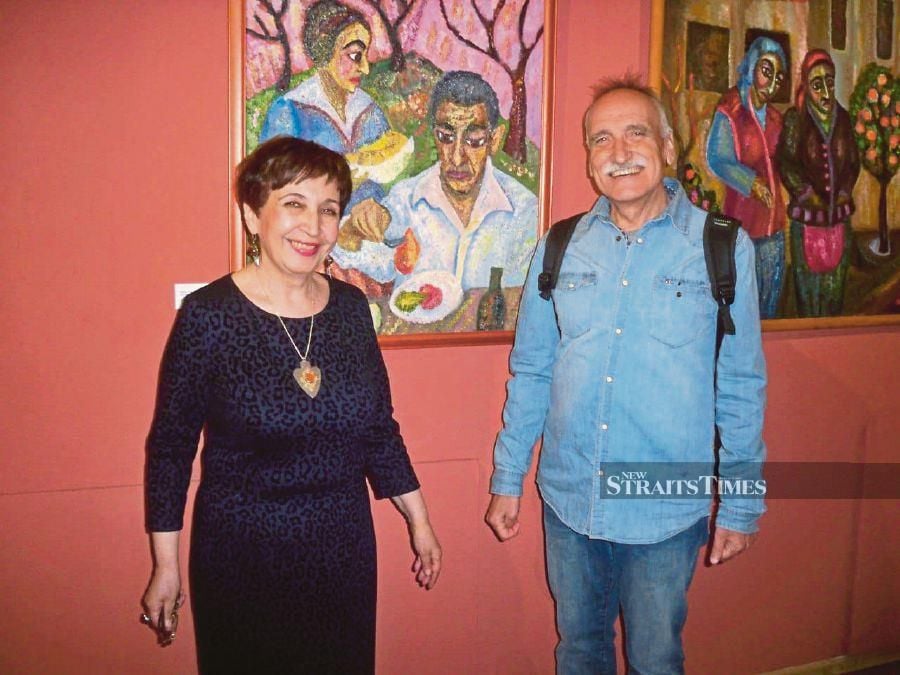I met Nina Gabrielyan in the late 1990s. It was during this time that the Nusantara Society, sponsored by Dewan Bahasa dan Pustaka (DBP), was preparing a collection of traditional and contemporary Malay poetry called The Brook.
It was to be the most comprehensive collection of translations of Malay poetry ever published in Russia. It was planned to present work from 31 poets.
They included Usman Awang, A. Samad Said, A. Latif Mohidin, Baha Zain, Muhammad Haji Salleh, Siti Zainon Ismail, Kemala, Zurina Hassan, Rahman Shaari, Abdulhadi Muhamad, Lim Swee Tin and others, 70 pantun and excerpts from two syair: the romantic Ken Tambuhan and the fabulously adventurous Siti Zubaidah, which is about the legendary war of the Muslim state of Kambayat (Cambay) located in Northern India with the Celestial Empire (China).
The compiler of the collection, Dr Boris Parnikel, tasked me with translating the poems, and entrusted the poetic refinement to two poets who did not know the Malay language: Marina Eliseeva and Nina.
The first was supposed to deal with the poetry of modern poets, and the second — with the Malay syair.
Nina translated French poetry into Russian, for she graduated from the French Department of the Moscow Institute of Foreign Languages.
Her translations of the syair were successful. The monorimic quatrains, of which the Malay syair are composed, found new life in her vivid texts. She managed to convey not only the poetic form, but also the spirit of the works. She was also lucky to attend the launch of the collection in Kuala Lumpur, at the invitation of DBP.
Malaysia made a huge impression on Nina. Its colourful nature, friendly and kind people, exotic food, and warm welcome at DBP remained in her memories forever.
When, after a 15-year stay in Malaysia, where I lectured at Universiti Malaya, I returned to Moscow, I was surprised to learn that Nina had also become an artist. Apparently, poetry and painting are closely related.
Malaysia is no exception. I will name just a few brilliant poets who painted wonderfully: A. Latif Mohidin, Siti Zainon Ismail, Abdul Ghafar Ibrahim (AGI), A. Samad Said and Kemala.
We met at her new exhibition, and there were already more than 30 of them!
This is how a critic, Ruben Gyulmisaryan, evaluates Nina's paintings: "The colour palette of Nina Gabrielyan's paintings is a bit like Armenian carpets — not those bright and catchy patterns, but rather muted patterns in terms of colour, but rich in various colours.
"Usually these are either still lifes, or landscapes, or amazing figures with wide, talking eyes. These figures and still lifes, contrary to the traditional understanding of the latter as 'dead nature', are really alive, trying to convey to the contemplator the thought put into them by the artist."
Since then, I almost never miss the opportunity to admire her paintings and visit her exhibitions. And we are talking not only about the colour palette and compositions of her paintings, but also about Malaysia, which Nina cannot forget.
Her dream is to visit the amazing country again and this time to capture its beauty not only in memory, but also on canvasses. She was about to get ready for her second trip to the tropics, but the pandemic prevented her from realising her dream.
But as soon as the situation allows, she will definitely hit the road and I hope that her next art exhibition will be dedicated to Malaysia, which she loved so much.
The writer, writing from Russia, is a former lecturer of Universiti Malaya
The views expressed in this article are the author's own and do not necessarily reflect those of the New Straits Times





